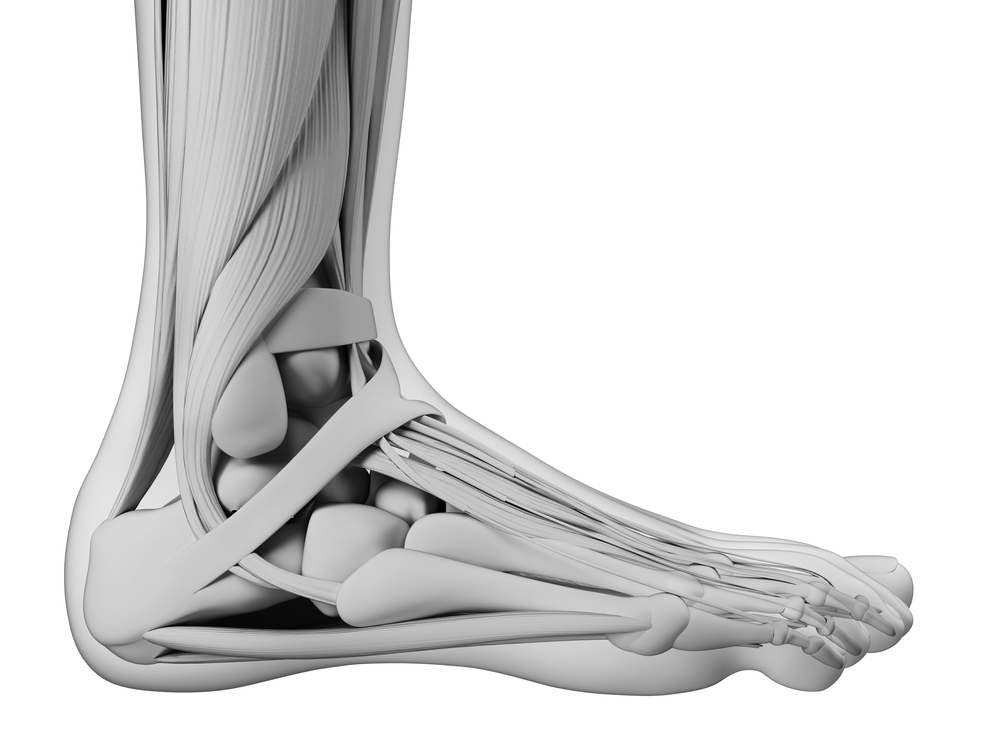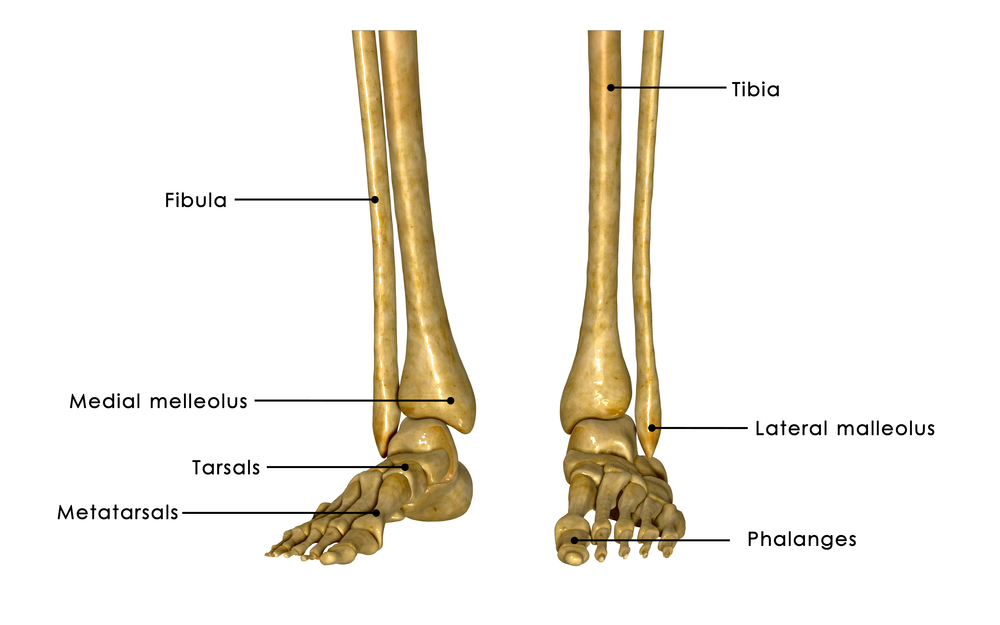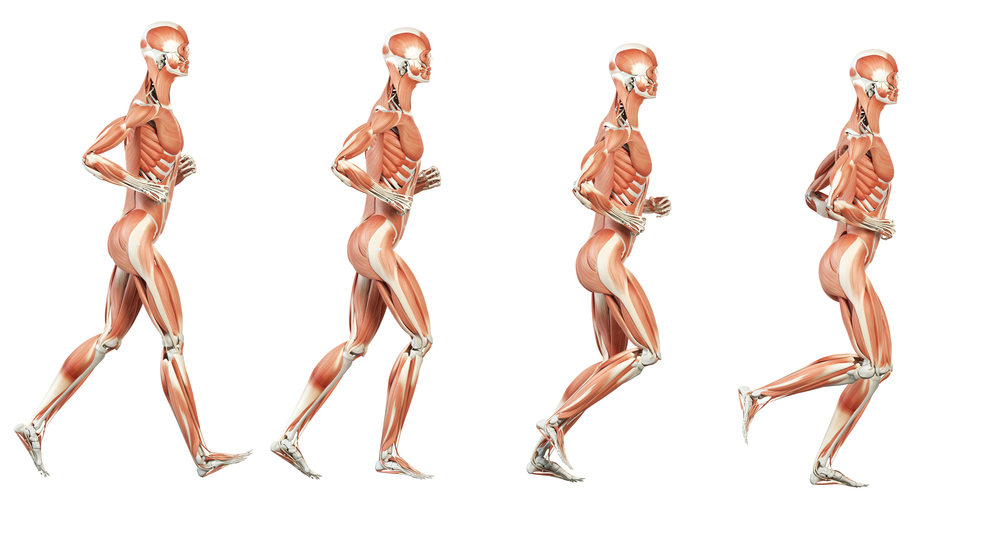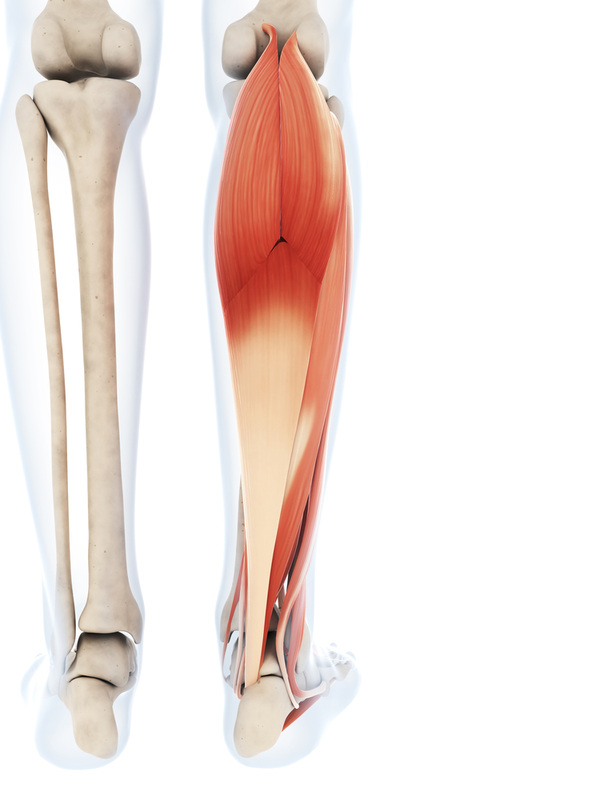They are without question the most complex piece of “equipment” you own and arguably the most important if you’re an avid mountain hunter. Each foot has 26 bones, 33 joints and over 100 hundred ligaments, tendons, and muscles. To put that in perspective, your two feet house 25% of all the bones in your body. Your feet are integral to absorbing the impact of walking, hiking, running and jumping and essential to the stability in your ankles, knees and hips. They allow us to transfer power from the rest of the body into the ground so we can propel ourselves across the landscape and up and over mountains.
If you’ve ever had problems with your feet, ankles, or lower legs you know just how debilitating an injury or even something as simple as a blister can be. Outside of acute trauma like a fracture or severe ankle sprain, the overwhelming majority of foot and ankle injuries are cumulative (build up over time) and in most cases preventable.
With some knowledge and a commitment to some pre-habilitation, mountain hunters can ensure their feet, ankles and lower legs are functioning at an optimal level well in advance of the hunting season. And if you’re in the market for new boots this year, selecting a boot prior to taking the time to make sure your feet are in the best “shape” possible is like putting new tires on a truck that needs its suspension and chassis overhauled. But let’s cover a little background before we dive into the specifics of foot and lower-limb “prehab”.
 As much as I would love to say that my job as Editor in Chief of the JOMH is a full-time gig, it is not. It is predominantly a labor of love, fueled by a deep-seeded passion for hunting and the mountains. By day, I am a Canadian Board Certified Pedorthist (different from a Podiatrist), and for the past 11+ years have worked in the footwear and foot care industry. If you’re an American or International reader, the most likely question you’re asking right now is “what the hell is a Pedorthist?!” but if you’re a Canadian reader you’ve probably either been to one personally or know someone who has. The strict definition of a Canadian Pedorthist is a “licensed clinician trained in the assessment and design of custom foot orthotics and orthopaedic footwear; one of the few healthcare professionals trained specifically in the assessment of lower limb anatomy and muscle and joint function”. To become a Canadian Board Certified Pedorthist , you must complete a university degree that includes coursework in the areas of anatomy, biomechanics, gait analysis, medical conditions and diseases, physical assessment and ethics before entering the rigorous 3,500 hour (2 – 3 year) clinical practicum. Upon completion of the practicum, candidates are qualified to challenge the National board exams that when passed result in a license to practice. This training and our scope of practice differs from Pedorthists trained in the American system.
As much as I would love to say that my job as Editor in Chief of the JOMH is a full-time gig, it is not. It is predominantly a labor of love, fueled by a deep-seeded passion for hunting and the mountains. By day, I am a Canadian Board Certified Pedorthist (different from a Podiatrist), and for the past 11+ years have worked in the footwear and foot care industry. If you’re an American or International reader, the most likely question you’re asking right now is “what the hell is a Pedorthist?!” but if you’re a Canadian reader you’ve probably either been to one personally or know someone who has. The strict definition of a Canadian Pedorthist is a “licensed clinician trained in the assessment and design of custom foot orthotics and orthopaedic footwear; one of the few healthcare professionals trained specifically in the assessment of lower limb anatomy and muscle and joint function”. To become a Canadian Board Certified Pedorthist , you must complete a university degree that includes coursework in the areas of anatomy, biomechanics, gait analysis, medical conditions and diseases, physical assessment and ethics before entering the rigorous 3,500 hour (2 – 3 year) clinical practicum. Upon completion of the practicum, candidates are qualified to challenge the National board exams that when passed result in a license to practice. This training and our scope of practice differs from Pedorthists trained in the American system.
The key information to take away from the definition above is our training in the assessment of lower limb anatomy and muscle and joint function as that will be the focus of this article. Yes, I am trained in designing and manufacturing custom foot orthotics and I dedicated a good deal of my early years in the field to working primarily with these devices. But our understanding of human biomechanics and foot function has changed considerably over the past few years and the bulk of my work now involves pure gait analysis and the utilization of various therapeutic exercise techniques before making a person orthotics (if at all) and/or making footwear recommendations. Specific to the mountain hunter, before we make any decisions on boots, insoles or orthotics it is essential to make sure our feet, ankles and lower legs are able to do the basic, fundamental jobs Nature designed them to do.
Upright, bi-pedal movement is one of the defining characteristics of the human species and as was popularized in the book Born to Run our feet have changed little since we first started moving around on two legs millions of years ago. Numerous preeminent evolutionary biologists believe our feet and our ability to travel overland for extreme distances allowed us to evolve into the preeminent hunter, scavenger and forager on the planet. Our first forays into hunting were likely “persistence hunts” where we literally ran our prey to exhaustion, and this was made possible in part due to the inherent “springiness” or elasticity in our feet and lower legs, making us incredibly efficient at covering ground. This is a key point that forms the basis for how best to “bulletproof” your feet. For decades, the conventional theories on foot and lower limb biomechanics focused on “supporting” and “aligning” the feet. Yet, many people were still getting injured despite the proliferation of orthotics and supportive shoes. We had to be missing something.

This is not to suggest that orthotics or insoles don’t serve a purpose, for many people they do but if you truly want to prepare your feet, ankles and lower limbs to handle the demands of countless miles in the roughest terrain on the planet you cannot and should not rely on insoles or orthotics and stiff, supportive boots alone. Remember, all those bones, joints, muscles, tendons and ligaments are there to serve a purpose, primarily to act as a mobile, elastic suspension system to help us travel over a constantly changing surface beneath us. Again to use the car analogy, new tires (boots/insoles/orthotics) can only do so much when the suspension (feet/ankles/lower leg muscles) needs some maintenance. Working on improving how your feet, ankles, and lower legs work will not only make you a stronger, more durable mountain hunter but will help with stability in your knees, hips and back as well. It will also ensure you end up choosing the best boot for your individual foot shape and most importantly foot function. So let’s look at the most common deficiencies I find in my active or athletic patients and what we can do about them.
As much as the “born to run/hunt” argument resonates with me, the reality is most of us now spend the bulk of our weight-bearing time walking and standing on hard, flat surfaces so we live in a vastly different environment than our persistence hunting ancestors did. Even if you spend a good amount of time hiking or trail running the proportional amount of time on flat surfaces as opposed to natural, uneven surfaces is still significantly higher. The problem with this constant exposure to flat surfaces is we end up overtraining (or overusing) certain muscles and muscle groups and undertraining (or underutilizing) other muscles and muscle groups. The best way to think about this is walking and training on predominantly flat surfaces is like going to the gym every day and doing the exact same exercise…for thousands and thousands of repetitions (fact: the average North American takes 10,000 steps per day). The constant overuse of the same muscles day in and day out leads to range-of-motion problems in the joints themselves and then these joint restrictions feed back into the muscle imbalances and the cycle just keeps repeating itself. The bottom line is most people have lost the inherent mobility and elasticity their feet and lower limbs should have.

This brings us to the elephant in the room, and the whole idea of collapsing arches or “over-pronation”. I get a lot of people that come through my practice that have been diagnosed as having “flat feet” or told they were “over-pronators” and although these can be legitimate issues, the bulk of these people are actually “collapsing” their arches because of bigger problems in the ankle and lower leg muscles NOT because they have unstable or “weak” arches. I also get a ton of patients that come into my practice that have been trying to “strengthen” their arches, especially after the barefoot running craze hit, but aren’t seeing the results they’d like in terms of injury prevention or performance, let alone in the shape or posture of their arches.
The reality is focusing on the arches of the feet alone, whether through devices like insoles or orthotics or through strengthening exercises without working on some key areas in the ankles and lower legs FIRST is like trying to dam a river at its flood plain versus going back upstream and building a smaller dam at its headwaters. I have had countless patients come in with chronic Achilles problems, calf muscle strains/cramping, and arch pain that have tried both orthotics and foot strengthening exercises with little to no effect, and within weeks of focusing on what I’ll describe below see significant improvements. I would like to be crystal clear here, I am not saying that orthotics or insoles or foot strengthening exercises are not beneficial. What I am saying is that before we focus on the position of the feet/arches we must rule out the deficiencies I’ve listed below. If you’re a health care practitioner and would like to challenge me on this, I’ve read every possible research paper out there regarding the medical significance of “pronation” or “arch collapse” and I welcome any discussion on this matter. Feel free to contact me personally at the email provided on the subscription page.
Without question, the two most common problems or deficiencies I find in patients are reduced ankle range of motion (in a specific motion called dorsiflexion – more on this in a bit) and muscle imbalances between the very strong, powerful calf muscles (gastrocnemius and soleus – see calf muscle image below) and the outer lower-leg muscles (the peroneals – see peroneal image) that act as stabilizers when we’re moving across uneven terrain. These peroneal muscles in particular are truly essential muscles for the mountain or wilderness hunter.

Let’s tackle the reduced ankle range of motion issue first as it is virtually a given each and every one of you needs to work on this or at a minimum will benefit from improvements in this specific range of motion (ROM). Most people are too focused on the side to side range of motion in their ankles, usually due to a history of ankle sprains or at least the fear of spraining an ankle. The reality is the primary deficiency occurs in the ability (ROM) of the ankle to allow the foot to move back towards the shin. This is called dorsiflexion. It is integral to moving forward or in the case of mountains, upwards. Dorsiflexion allows us to plant our foot on the ground and then move the rest of the body over top of the foot (see Dorsiflexion In Action image above). If we do not have adequate dorsiflexion, one of two things occurs: our heel pops up off the ground earlier than it should (a key factor behind many people’s heel blisters) or we are driven into a collapsed position in the arches as a compensation for the lack of movement in the ankle.
This is simple physics. If a certain segment of the moving system is not doing its job (in this case allowing proper movement to occur at the ankle), then the movement or motion needs to be found somewhere else. And for the vast majority of “pronators” this is what’s happening as the arches and the inner ankle represent the path of least resistance for the forces that should be dealt with by ankle dorsiflexion. This reduced ankle ROM can sometimes be truly anatomical (meaning your bones are just built that way) but for the majority of people this restriction is due to the constant overuse of those big, strong calf muscles from all your time spent on hard flat surfaces. So again, before we make decisions on insoles, orthotics or boots it is essential we do everything possible to improve this ankle dorsiflexion.
Imbalances between the calf muscles and the outer lower-leg muscles are next in line. And this is where things get interesting. Many patients ask, did the ankle restriction cause the imbalances or did the muscle imbalances cause the ankle restriction? We have no data or research to confirm this (because no one has tried to study it) but my belief is the environmental effects of the predominantly flat surfaces we find ourselves walking and standing on the bulk of the year produces the muscle imbalances which in turn result in the reduced ROM in the ankle (and many other joints in the body FYI). I have seen these imbalances in patients as young as 10 and as old as 70 and they are considerably more prominent in people that rarely spend time on trails or natural surfaces.
Our constant interaction with flat surfaces means our calf muscles (gastrocnemius and soleus) are severely overused and the lateral stabilizers (peroneals) rarely used. This does not mean they are weak however, just that these outer stabilizer muscles have gone “dormant”. Even when we do walk on natural, uneven terrain those outer stabilizers (peroneals) have a hard time “waking up” because they’ve been underutilized for so long that the brain and the body in a way forget how to use them. And these peroneal muscles are absolutely essential to proper foot and ankle function. They both stabilize the outer ankle (prevent an outer ankle sprain) but also stabilize the front half of the foot as we’re pushing off against the ground. In fact, once the heel is off the ground the longer of these two peroneal muscles, peroneus longus, does the bulk of the stabilization of the foot and lower leg. So when we’re climbing up a steep incline or slide, it’s these muscles that keep our feet strong against the ground and allow us to transfer power back into the slope. If they’re not “firing” (aka awake) then all our other muscles have to work harder (again physics) and we fatigue faster. So we need to “wake them up” and there are some simple techniques to do so.

Dealing with these two very common issues, will help with a host of very common injuries or symptoms such as Achilles or calf muscle strains, heel blisters, arch pain, shin pain and even some issues in the knees like IT band syndrome or kneecap (patella) irritation. The beauty of all this is the techniques to improve ankle ROM and address the imbalances in the lower leg muscles are simple and highly effective. The only BUT is for the techniques below to work you MUST do them consistently. I tell most of my patients these should be done DAILY. Remember, the average person takes 10,000 steps per day and for most of us that’s on flat surfaces the majority of the time. If you’re active you’ll be well over this daily average and each of those steps has the potential to create these joint restrictions and muscle imbalances so we need to work on it each and every day. The best analogy I can use here is it’s like brushing your teeth. It just becomes part of your day.
Techniques for Bulletproofing Your Feet:
The order of the exercises listed below is very important. Before trying to mobilize the ankle joint, we need to get the lower leg muscles working together. As noted above, most people will be very over trained (aka tight) in the calf muscles and undertrained (aka dormant) in the stabilizers on the outside of the lower leg so before we try to “fix” the ankle ROM we need to get these muscles working on somewhat of an equal platform. If the muscles are working together, the ankle ROM will clean up much faster. As world renowned physical therapist Gray Cook says, “You need to move well before you can move more”. Lastly, if you’ve had ankle or foot surgery and have any “hardware” in your feet, ankles or lower legs these techniques MAY NOT apply. We can’t change plates, pins and screws but we can change how your muscles and other soft-tissues interact with the effected joint post-surgically. If this is you, your best bet is to find a sports oriented physical therapist and have them assess your situation and build a program for you.
1) Use “The Stick” or a similar device to perform what’s called Self-Myofascial Release (SMR or SMFR for short). Self-Myofascial Release refers to someone performing soft-tissue therapy on themselves, with the aim being to relax contracted muscles, improve blood and lymphatic circulation, and stimulate the neuromuscular stretch reflex in the muscles and fascia (connective tissue) that permeates the entire body. Although the science behind this type of technique is inconclusive, I have seen amazing results clinically. And for the lower legs in particular The Stick (or a similar device) is more effective than a standard foam roller. The video below (skip the ad) provides an overview of this technique for the lower legs, although I would suggest you roll at half the speed demonstrated in the video. The pressure you use should be “comfortably uncomfortable” (aka the “good” hurt) but not painful. It should take you no more than 3-5 minutes per leg to go through this whole circuit.
SMR VIDEO FOR LOWER LEG MUSCLES
2) Non-weight bearing (NWB) ankle mobility drills are the true key to bulletproof feet. These are without question the most common exercises I give my patients and incredibly effective when preceded by the SMR work. The key with these mobility drills is to do them slowly and really push TRY to achieve maximum range of motion in each position. Most people will (and should) experience some burning in the muscles when they start doing these and if you are experiencing cramping in the feet or lower legs then focus on working through a smaller range of motion to start and work up to bigger and bigger movements. I cannot emphasize the importance of doing these slowly! The video quality is quite poor but the instruction is spot on. I do not recommend doing the balancing exercise they show in the video from 3:02 onwards but everything preceding this point in the clip is essential.
3) Last but not least, in order to truly maintain the mobility and muscle balance we’re aiming for it is imperative to do whatever you can to minimize your exposure to flat, linear surfaces. This is not easy but with some creativity it’s not impossible or impractical. If you walk your dog around your neighbourhood, walk on the grass instead of the sidewalk. If you run, run trails not road. Anywhere possible, get off the flat surfaces that surround us. The more you reduce the time you spend on these surfaces the more mobile and functional your feet, ankles and lower legs will remain.
In Summary:
With a relatively small time commitment and some simple techniques we can improve mobility, stability and power in the feet and ankles. Doing this will increase your strength, endurance, durability and improve your ability to cover ground, climb mountains and come back down heavy. We were born to hunt and by focusing on the right techniques you’ll be able hunt harder, higher and deeper than ever before.

